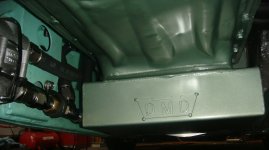Deamaker 5
Senior Member
Offline
So I will toss this out there to the community to see what people have had success with when it comes to replacing the oil pan gasket.
Do you prefer the old cork gasket with maybe a small film of silicone, or the newer nitrile rubber gasket?
Please let me know your thoughts as to the best way as to reduce as much leakage as possible because we all know they leak; I just want to minimize my leakage!
Thanks.
Do you prefer the old cork gasket with maybe a small film of silicone, or the newer nitrile rubber gasket?
Please let me know your thoughts as to the best way as to reduce as much leakage as possible because we all know they leak; I just want to minimize my leakage!
Thanks.

 Hi Guest!
Hi Guest!

 smilie in place of the real @
smilie in place of the real @
 Pretty Please - add it to our Events forum(s) and add to the calendar! >>
Pretty Please - add it to our Events forum(s) and add to the calendar! >> 


